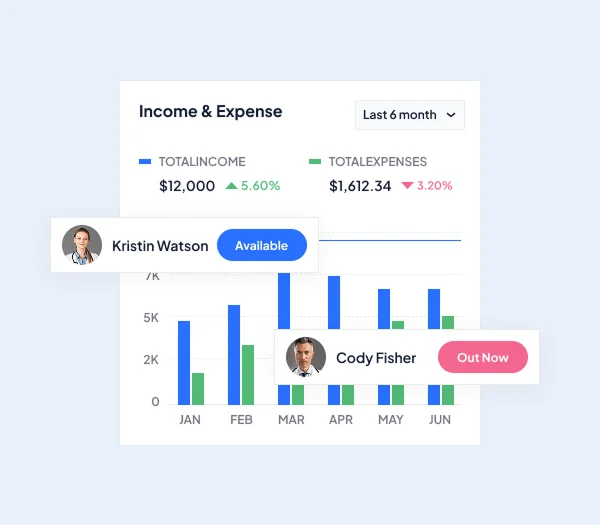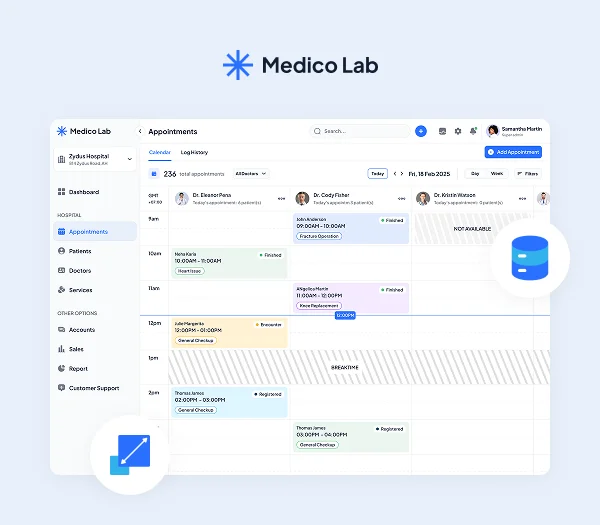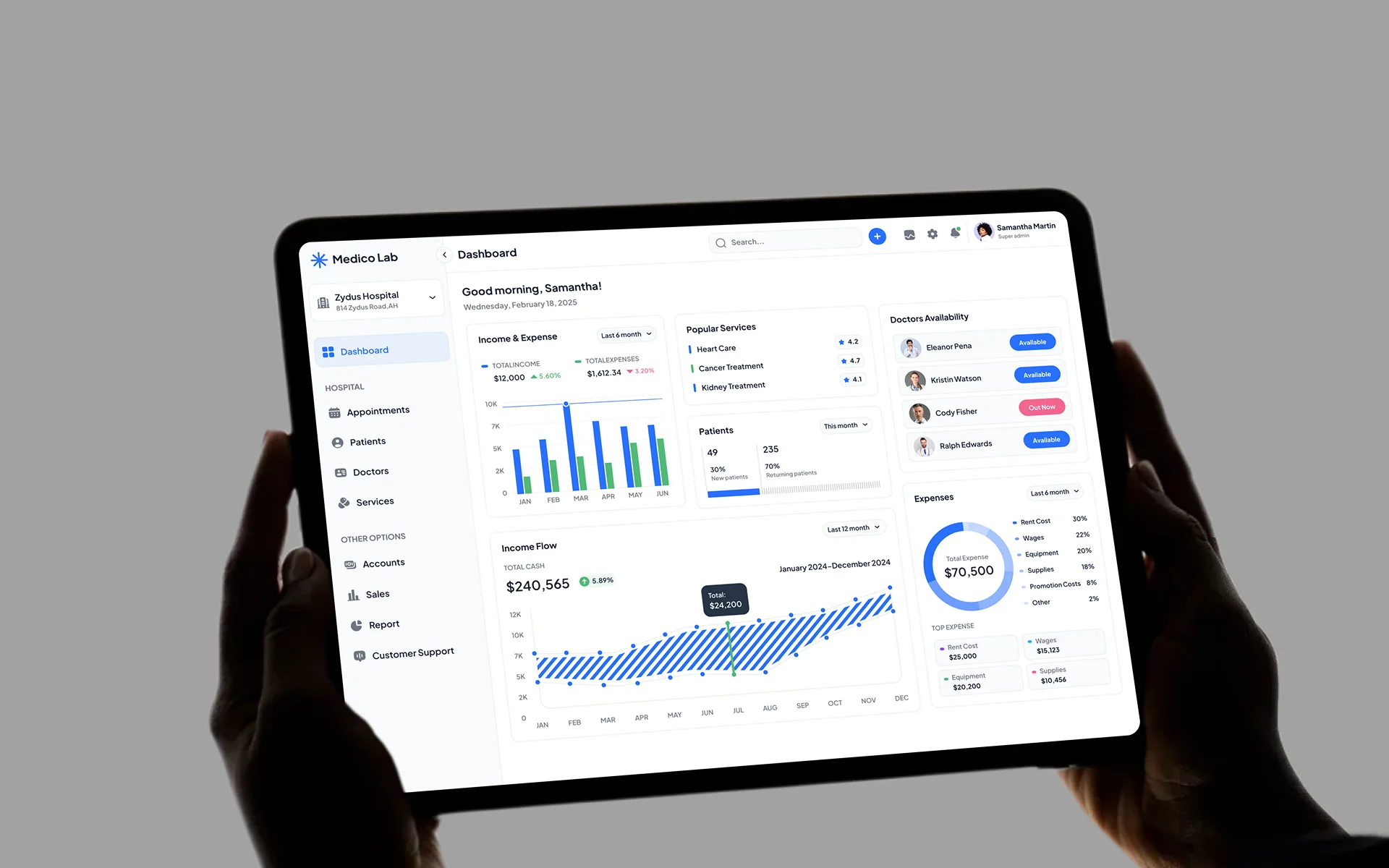

Scalable Healthcare Platform for a Leading Medical Institution

The Challenge
A prominent medical institution was grappling with significant challenges in managing and securing large volumes of sensitive healthcare data. The institution was seeking a comprehensive solution to streamline patient data access, ensure compliance with regulations, and create a seamless experience for both patients and healthcare professionals.
The institution’s existing systems were fragmented and not fully integrated, which meant that healthcare providers had to manually access and cross-reference data from various sources. Additionally, the volume of patient data was growing rapidly, and the platform needed to be able to handle this influx without performance degradation. They also needed a system that adhered to strict regulatory requirements, particularly around data privacy and security.
Key challenges included:- Ensuring compliance with stringent healthcare regulations such as HIPAA and HITECH.
- Seamless integration of disparate systems, including electronic health records (EHR), health information exchanges (HIE), and third-party tools.
- Creating a scalable platform that could accommodate growing data and user traffic.
- Developing a user-friendly experience that would work for both healthcare providers and patients, ensuring that the platform would be intuitive and easy to use.
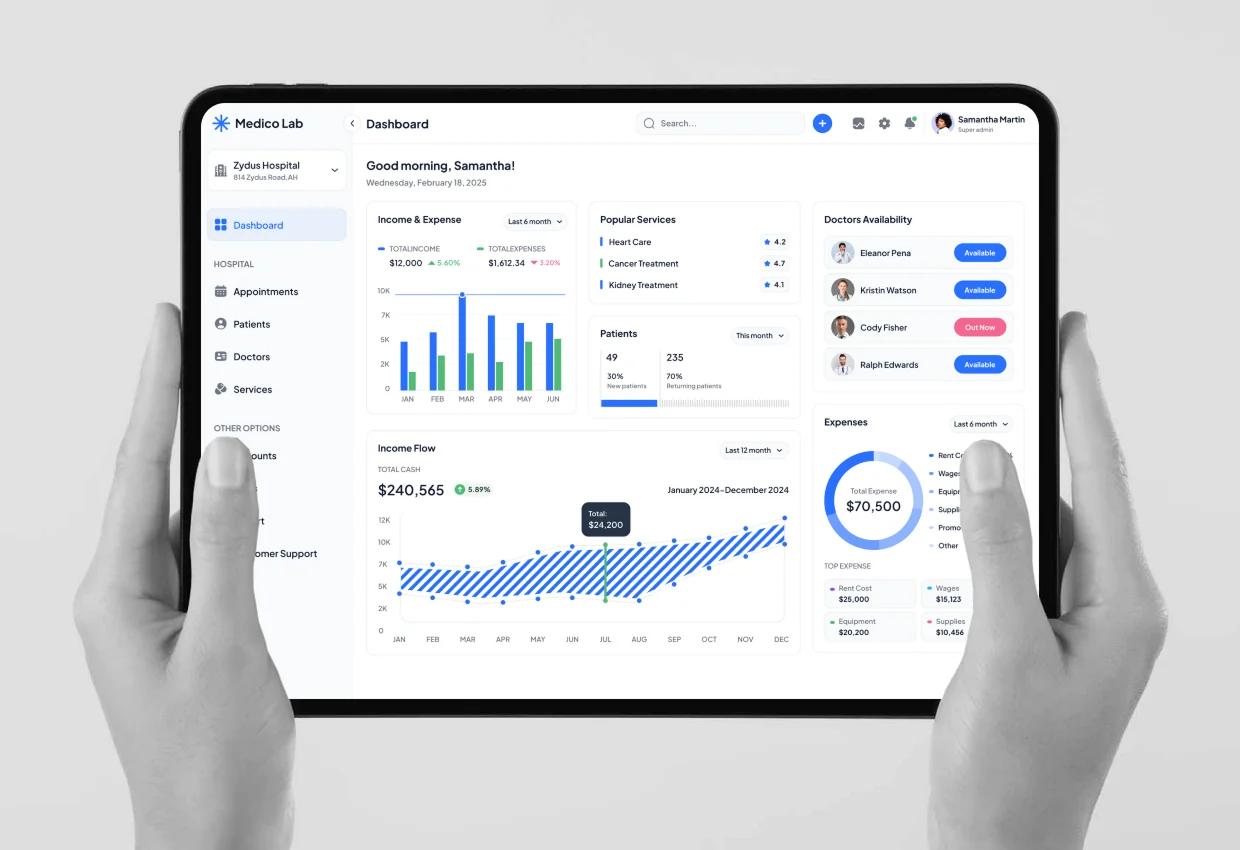
The Solution
We worked closely with the institution to design and develop a customized healthcare platform that addressed the security, scalability, and integration challenges while improving the overall user experience. Our approach was comprehensive, ensuring that every aspect of the platform—from data storage to user interface—met the institution's specific needs.
Data Security & Compliance
One of the biggest priorities for the institution was ensuring that the platform adhered to strict healthcare regulations such as HIPAA, HITECH, and GDPR. We conducted a thorough analysis of the platform’s security requirements and implemented industry-leading encryption techniques to safeguard data both at rest and in transit.
We also introduced multi-layered security protocols, including multi-factor authentication MFA and role-based access controls RBAC, to prevent unauthorized access to sensitive data. These measures were designed not only to meet compliance standards but also to create a secure environment where healthcare professionals could confidently share and access patient data without worrying about breaches.

Integration with Existing Systems
Given that the institution was already using several different systems for managing patient information,one of the key challenges was integrating all these systems into a cohesive platform. We worked closely with the IT team to integrate the new platform with the institution’s existing electronic health records (EHR), health information exchanges (HIE), and third-party tools.
The integration was critical to ensuring that healthcare providers could access real-time data without jumping between different systems or platforms. Our team implemented API-driven integrations and data syncing tools to ensure that all patient data was consolidated and accessible from a single platform. This eliminated the need for duplicate data entry, reduced errors, and allowed for faster decision- making by healthcare professionals.

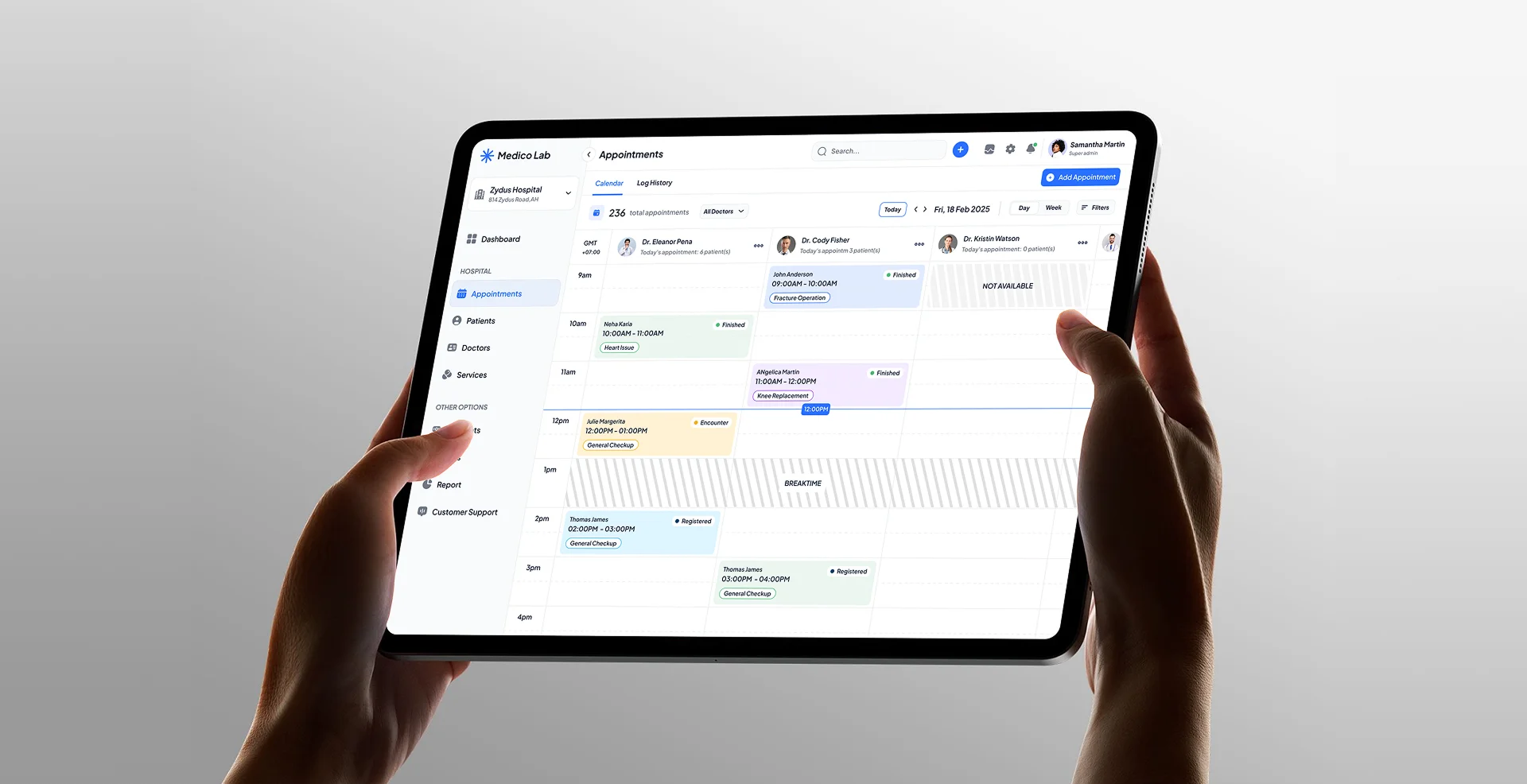
Scalability & Cloud Infrastructure
As the medical institution continued to grow, it was clear that their platform needed to be highly scalable to accommodate increasing volumes of patient data and user traffic. We implemented a cloud-native infrastructure that allowed the platform to scale horizontally, meaning it could easily grow with the institution’s expanding needs without facing performance bottlenecks.
We utilized cloud technologies to ensure that the platform could automatically scale up or down based on traffic demands. By designing the platform with microservices architecture, each component could be scaled independently, allowing for efficient resource management. This also made it easier to deploy new features, fix bugs, and release updates without affecting the overall platform.
Additionally, the cloud infrastructure provided the necessary redundancy and high availability, ensuring that the platform would remain operational even during peak usage times. The ability to scale quickly and efficiently has future-proofed the platform, allowing it to continue supporting the institution as it expands.
User Experience Design
The success of a healthcare platform doesn’t just depend on its backend performance; it’s just as crucial for the front end to provide a smooth, intuitive experience for both healthcare providers and patients. We worked with the institution to develop a platform that was easy to navigate and offered a user -friendly experience across all devices, whether for a healthcare provider accessing patient records or a patient managing their appointments.
Key features like appointment scheduling, real-time health data access, and telemedicine capabilities were integrated into the platform in a way that was simple and intuitive. We focused on ensuring that the user interface (UI) was streamlined, allowing users to perform tasks quickly without unnecessary clicks or complicated navigation.
The platform also included features like personalized patient dashboards, which allowed individuals to view their health records, upcoming appointments, and follow-up instructions, improving patient engagement and communication with their healthcare providers.
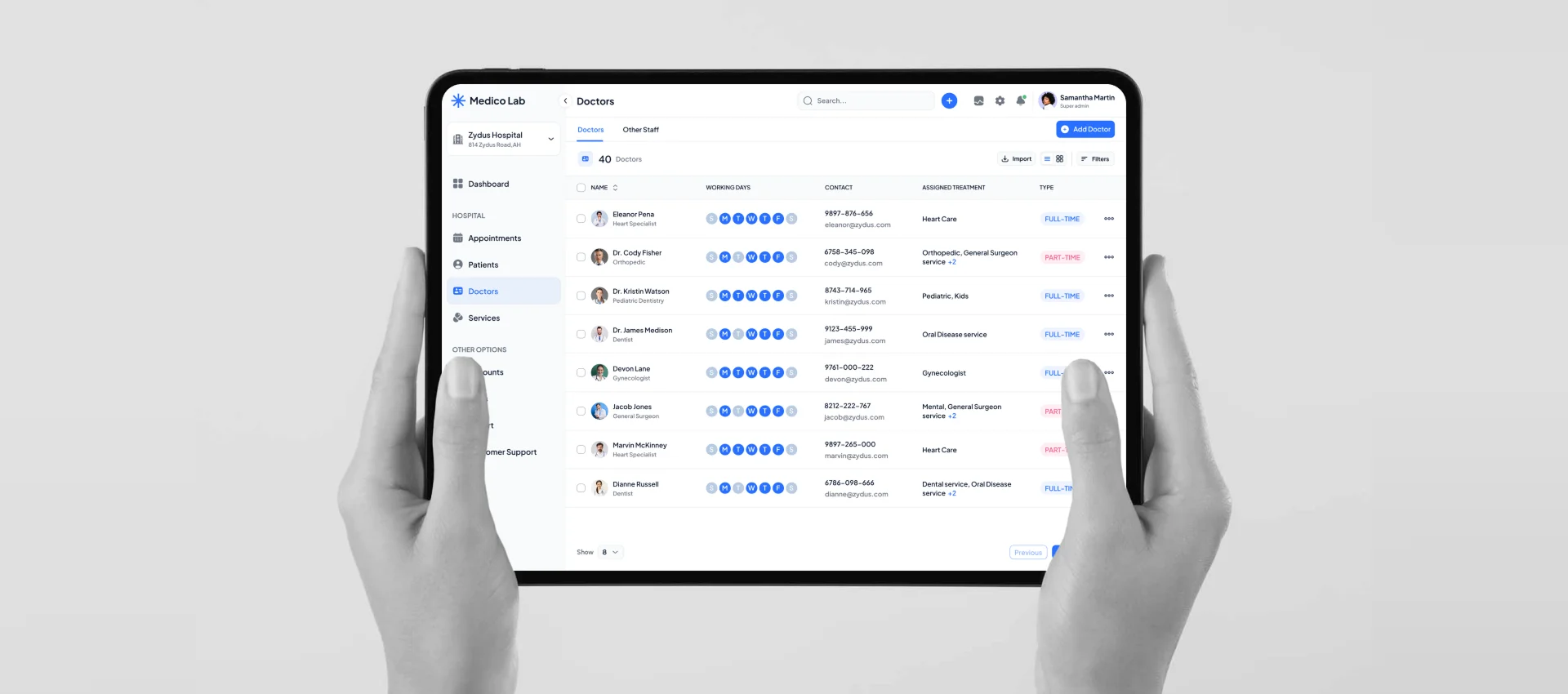
The Team Involved
To successfully execute this complex project, we brought together a highly skilled, cross-functional team that worked closely with the client at every stage. The team included:
QA Engineers
The QA team worked to implement multi-layered protection for sensitive patient data. They ensured that every aspect of the platform was encrypted, and they integrated advanced authentication and authorization protocols.
Cloud Architects
The cloud team designed the scalable infrastructure that supported both the platform’s growth and the need for high availability. They helped design a microservices-based architecture and ensured that the cloud infrastructure was set up for automated scaling.
UI/UX Designers
The design team ensured that the platform would be easy to use for healthcare professionals and patients alike. They focused on building an intuitive interface that minimized friction and increased user engagement.
Data Scientists
The data science team worked on integrating machine learning and analytics capabilities into the platform. This enabled predictive analytics for patient outcomes, resource allocation, and operational efficiencies.

DevOps Engineers
The DevOps team built and managed the continuous integration and deployment pipeline, enabling the rapid and secure rollout of updates and new features. Their work ensured that the platform could be updated without downtime, minimizing disruptions for users.
Integration Specialists
Our integration team was responsible for ensuring smooth interoperability between the new platform and the client’s existing EHR systems, HIEs, and third-party tools, allowing data to flow seamlessly across the platform.


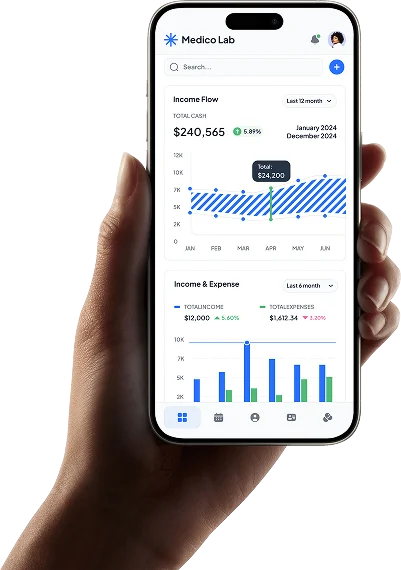
Cloud Deployment & Infrastructure
We deployed the platform on a cloud infrastructure using AWS , Google Cloud , or Microsoft Azure, ensuring that it was highly scalable and available. The cloud-native design allowed for efficient load balancing, and the infrastructure automatically adjusted to demand, ensuring that there was no downtime or slow performance, even during peak usage.
The deployment process involved a robust CI/CD pipeline to streamline updates and new feature rollouts. By using automated deployment tools, we ensured that every update was tested and deployed without impacting the user experience. The platform was also configured for redundancy, with multiple data centers in place to ensure failover and business continuity.
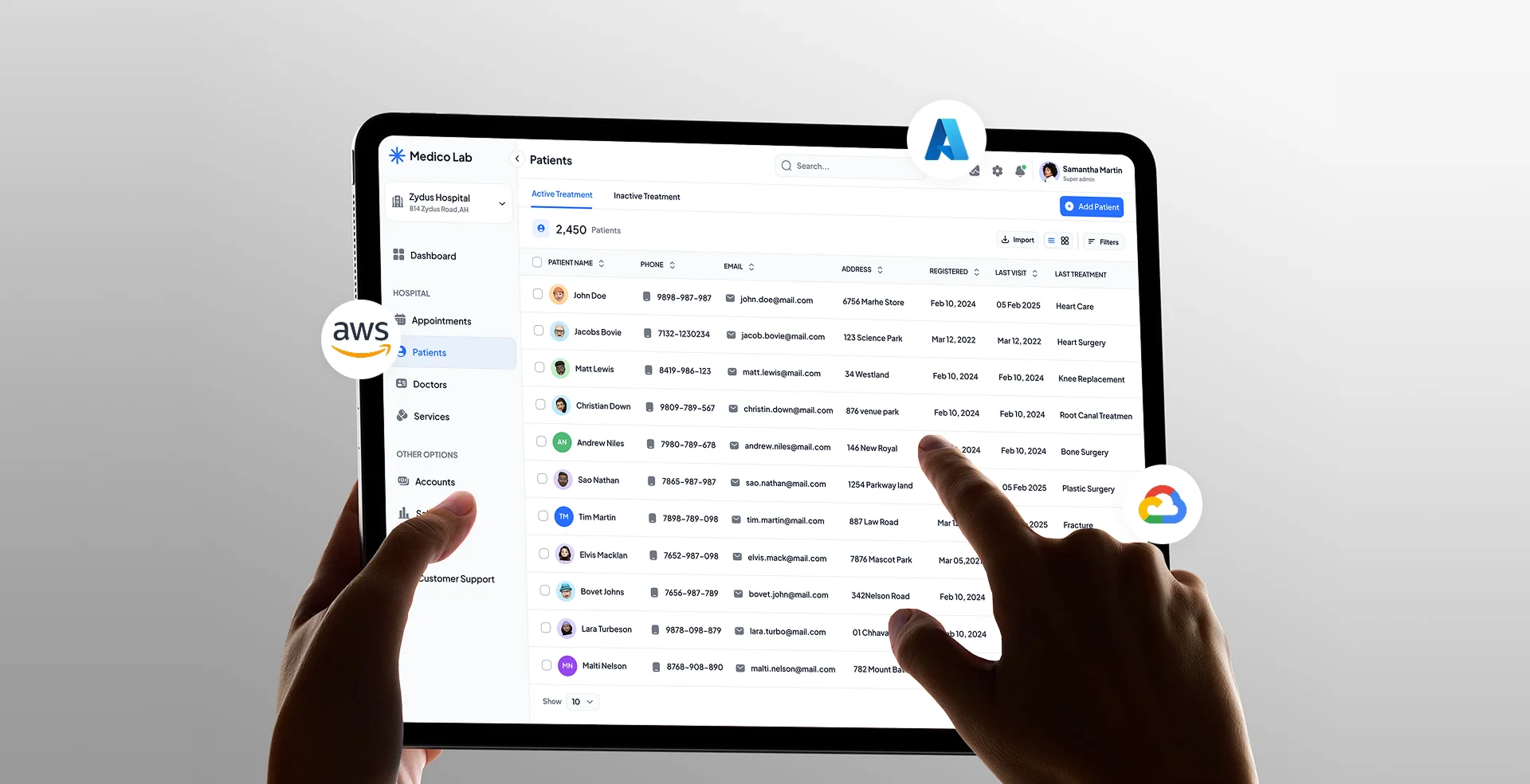
Results & Impact
The new healthcare platform has delivered significant improvements in operational efficiency, patient care, and regulatory compliance. Below are some of the key results:
Increased Efficiency
The platform’s integration with existing systems and automation of key tasks reduced manual data entry and administrative overhead, leading to an 80% reduction in time spent on these tasks. Healthcare professionals can now access real-time patient data, improving decision-making and workflow efficiency.
Enhanced Data Security
The platform is fully compliant with HIPAA and HITECH, and the advanced security measures—such as multi-factor authentication, encryption, and RBAC—have reduced the risk of data breaches and unauthorized access.
Scalability for Growth
The cloud-native infrastructure has allowed the platform to scale with the institution’s growing needs, handling increasing patient data and user traffic without sacrificing performance.
Improved Patient
Patients now have easy access to their health records and can manage appointments through the platform. Telemedicine features have enhanced patient care and increased accessibility to healthcare professionals.
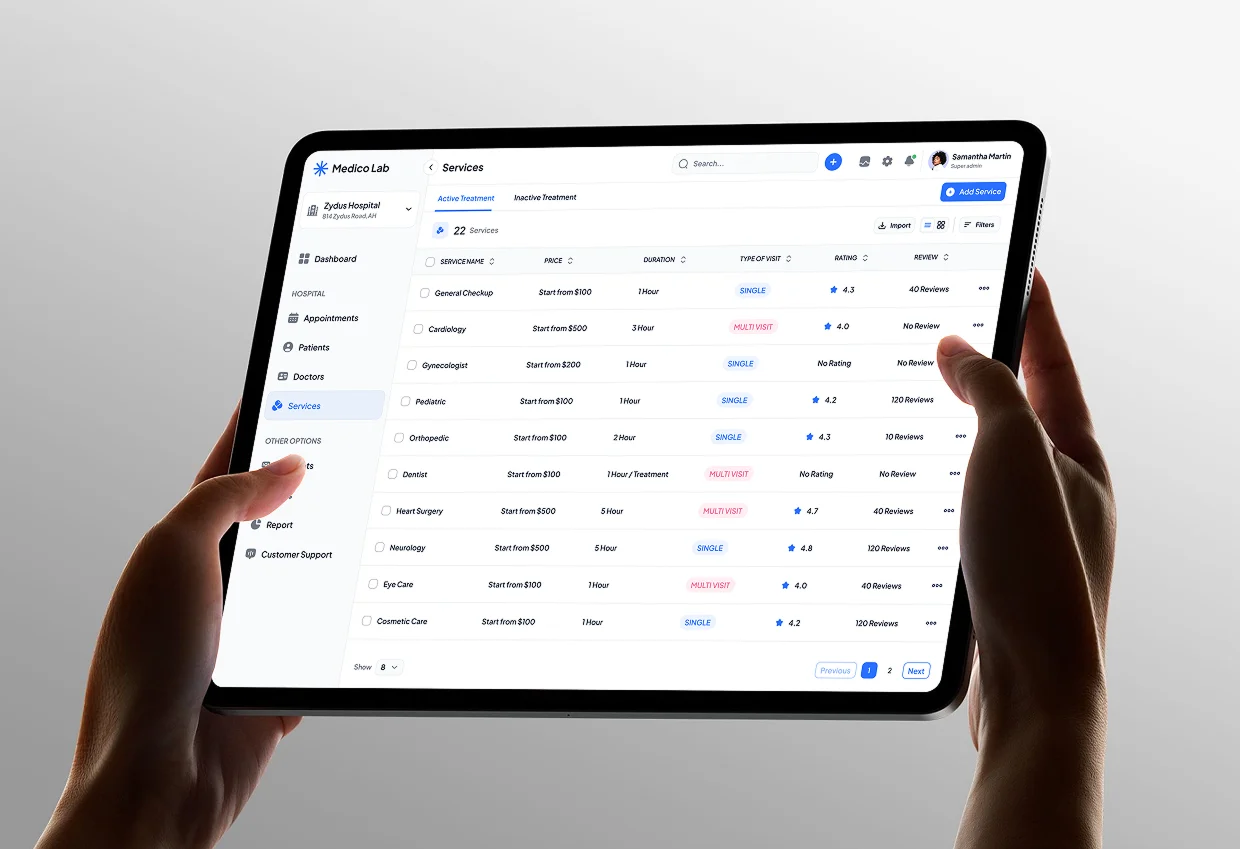
Conclusion
The custom healthcare platform has successfully addressed the institution’s challenges by focusing on security, scalability, and seamless integration. With full compliance to industry regulations, robust data protection, and a user-friendly design, the platform is positioned to support the institution’s continued growth.
The solution has optimized internal workflows, improved patient care, and empowered healthcare professionals with the tools they need to make better, data-driven decisions. With a scalable cloud infrastructure and the flexibility to evolve with future demands, the platform is ready to meet the needs of the institution for years to come.
Explore how we can help transform your healthcare platform.
Get in touch today!
